

Zastražišće – The 2025 travel guide
Zastražišće is a small village situated in Hvar’s rural eastern half, in a region known as Plame, which has been home to agriculture and shepherding for centuries. Few visitors encounter Zastražišće, let alone learn to pronounce the village’s name (if you’re brave, it’s zahs-trah-ZHEESH-che… good luck!)
But for those who like to get off the beaten path, Zastražišće is well worth the effort. Situated in the central part of the island, the village boasts some of the most stunning beaches on island Hvar, a number of intrepid young gastronomic stars, and a glimpse at a forgotten way of life.
TABLE OF CONTENTS

An introduction to Zastražišće
Zastražišće is located about a 25-minute drive past the town of Jelsa. An Italianate church presides over a series of hamlets, rolling fields of lavender and olive, and a network of roads which trail down either side of the island’s coasts to some of Croatia’s prettiest beaches. This is a place to step out of the everyday and reconnect with nature, loved ones, and self.

How to get to Zastražišće on Hvar
Zastražišće by boat
Arrival by boat – whether a catamaran, sailboat, powerboat, or yacht – is an enviable mode of entry to Zastražišće. Although the village boundaries touch both the northern and southern coast of island Hvar, the best anchorages are both to be found to the north, which faces Brač and the beautiful Mosor mountain range on the mainland of Croatia.
The first reliable anchorage is Pokrivenik Cove. Its very name, which relates to the word for “cover” in Croatian, hints at its tranquil and protected position. In our opinion, this is one of the most bucolic bays on all of Hvar, with cheerful restaurants, gorgeous swimming, and sun-dappled clusters of fishermen’s cottages.

Pokrivenik Cove
The second notable anchorage is Vela Stiniva, another stunning cove. True to its name, which means “big cliff,” the harbour is wedged between steep limestone formations. There is a small harbour at the base of the bay, as well as a stone bollard where it is possible to tie up, but these spots are often occupied by local craft, so one is best advised to take an anchor. Two charming restaurants overlook the radiant blue waterfront, flanked by terrace vineyards and a small chapel.

Vela Stiniva
Zastražišće by car
If you are bringing a car from the mainland, you will begin your drive to Zastražišće from the east at Sućuraj or from the west in Stari Grad. From Stari Grad, the drive is pleasant and unstressful – until one reaches the town of Poljica, 5km away from Zastražišće. At Poljica, the new highway ends and an older, narrower road takes its place. This road continues all the way to Sućuraj. It has windy stretches with steep drop-offs that require opposing traffic to give way. If you are not used to driving in rural areas, our advice is to take your time, pull over to let others pass, and drive defensively. The roads to individual bays likewise feature steep, unprotected turns that can be even more harrowing. Be sure that you are comfortable with your vehicle’s brakes and clutch, and perhaps avoid driving after nightfall if the terrain raises your blood pressure.
As you make your way along this picturesque but alarming route, you may ask yourself: why don’t they build a better road here? In fact, plans are in the works to do so. The challenge for planners and residents is to find a compromise that serves existing communities at minimal cost to agricultural lands. In all likelihood, a solution will be reached, and a modern highway will run through this region in 5 to 10 years, bringing with it all the pluses and minuses of increased tourism traffic. To a degree, the poor quality of the road to Zastražišće has preserved it and surrounding towns in amber, so don’t forget to savour the uniqueness of this environment while it lasts. Think of it as your reward for driving with sweaty palms.
What to do in Zastražišće
Above all, Zastražišće is a place to find stillness: sun on stone, sparkling waves, wind through the olive leaves, and a sky full of stars. That said, there is an art to leisure, and we have some helpful ideas to help you relax with panache.
Olives of Zastražišće
Is there anything more quintessentially Mediterranean than the olive? This mighty tree has fuelled agriculture, trade, and culture for countless generations across the sun-soaked lands of southern Europe. Zastražišće has an especially strong connection to olives. It is home to the oldest tree in Croatia, planted 2,500 years ago by Greeks or Phoenicians. Having already lived five times longer than a typical tree, the plant still bears fruit today, which its custodian Tihomir Beroš collects each fall.
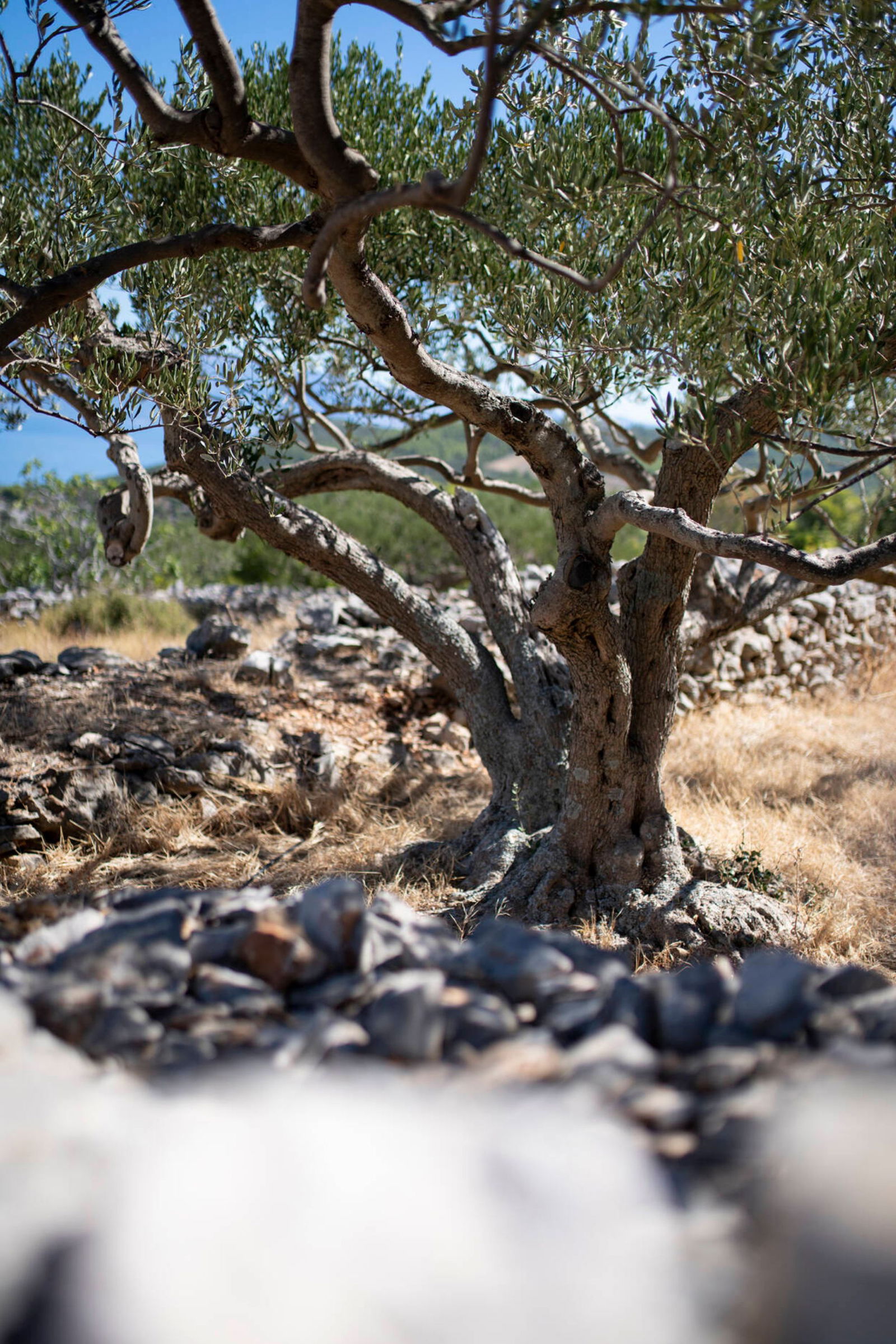
There is a real difference between hand-picked, organically grown, rapidly pressed olive oil and the stuff you find in the grocery store. When grown in vast monocultures, trees are far more susceptible to pests and diseases, which specifically prey on olives and perceive plantations as an all-you-can-eat buffet. To cope, growers spray toxins from low-flying planes to keep bugs at bay, and pump trees up with chemicals to enhance their fruit production. At harvest time, special trucks roll through the precisely calibrated rows of trees, throttling their trunks. By the following day, all of the olive fruits will have fallen onto mats waiting below.
This intensive method of cultivation shortens the lifespan of a typical tree to a mere 40 years, less than 10% of their natural lifespan. The impact of these engineered “forests” on both carbon emissions and biodiversity is lamentable, and the oil they yield reflects that fact, lacking flavour and spice, and containing harmful chemicals that enter the fruit as it ripens.
Unlike Spain and Italy, industrial olive plantations are virtually unknown in Croatia. They are totally nonexistent on Hvar. Most orchards here are under a hectare in size, and picking the fruit is a family affair which happens over the course of a week or two in the fall. Whereas the wine harvest is laborious and solitary, gathering olives lends itself towards socialising, a profound and gentle ritual that has hardly changed over thousands of years of civilization.
Autumn on the island is cool, sunny, and delightful. Groups gather around trees, one by one, chit-chatting and catching up until the job is done. A day on the field usually concludes with a big outdoor barbecue. The unit economics on olive oil produced in this fashion are not the stuff of an investment analyst’s dreams, but that’s not the point: spend a day harvesting olives on Hvar, and you will know why the olive branch has been a symbol of amity for millennia.
The quality of oils produced in this way is also outstanding. For proof, look to the New York International Olive Oil Competition – the largest and most esteemed showdown of oil producers globally. Similar to Wine Spectator in the realm of viticulture, NYIOOC highlights the best extra virgin olive oils from around the world to help distributors, restaurants, and consumers navigate a crowded field of offerings. The island of Hvar has 7 “gold” standard oils, out of just 87 for all of Croatia.
Most of us may think that an olive is an olive, but just as there are granny smith, fujis, and many other types of apple with very clear differences, there are hundreds, if not thousands, of varieties of Olea europea, the scientific name for the olive tree. About 150 varieties are grown for culinary use. On island Hvar, you can find five indigenous cultivars, helpfully described by local nature enthusiasts Marion and Zdravko Podolski in their blog Go Hvar, as well as the Italian leccino.

The most common variety of olive grown on Hvar is the oblica, which represents about 90% of trees on the island and has been grown here for at least two millennia. You can also find lastovko, a half-wild variety that is especially drought-tolerant, although it doesn’t like low temperatures. Like other sclerophyll (drought-loving) plants such as lavender and sage, lastovko’s flavours become more pungent and spicy the drier it gets. Levantinka, mastrinka, and drobnica are three other less common varieties, which can better handle certain soil or microclimate conditions. Finally, the Italian leccino, one of the most common olive varieties globally, is often grown near oblica to enhance the latter’s yield and also to compensate for “off-years,” because leccino fruits every year, whereas oblica only do so every other year.
At this point, you are probably dying to actually try some of these olive oils. If you are staying in Zastražišće, you must (no ifs, ands, or buts!) go to Seca, a strikingly contemporary and attractive new tasting room presided over by Eva Maria, the dynamic scioness of the Ćurin family olive orchard. As a graduation present after completing her degree in agricultural science, Eva Marija’s parents gifted her 500 trees in this remote part of Hvar, which does not have electricity or running water. Undaunted, this young visionary went to work constructing a sophisticated sensibility in a deeply rural profession. A perfect example of this fusion is Seca’s tasting menu, a pairing of her highly praised oils along with innovative takes on local ingredients prepared by a private chef. The setting is spectacular, and just 15 minutes from the transcendently lovely cove of Pokrivenik.

Seca’s tasting room
To further expand your palate for olive oil, journey slightly farther from Zastražišće to Radojković in the neighbouring village of Bogomoljje, which also offers tastings of its critically beloved oil – made in a grassier, spicier style than Seca – as well as its impressive mill facility.
Botanicals of Zastražišće
According to a local volunteer historian, Bernhard Seif, Zastražišće sits in an area that was designated for grazing and agriculture as far back as 1331. The rhythms of sowing and harvest continue to guide the town today. Its soil and climate particularly favour aromatic herbs, such as rosemary, oregano, and immortelle. Spend a little time while you’re in Zastražišće absorbing the rich scents and medicinal benefits of these classically Mediterranean flora.
You could begin your day with a feast of biodynamically-raised produce at Babić Homemade Products. Babić offers a glimpse into the soul of Croatian cuisine, a reflection of seasonality and the land. Plump figs and wild boar prosciutto cosy up to creamy goat cheese and mulberry chilli jam. Home-made pastas welcome the flavours of summer vegetables and seafood. Grilled breads soak up home-grown olive oil, as well as a variety of savoury dips and sauces. A refreshing distillation of elderflower and mint, a few glasses of wine from backyard grapes, and a selection of delicious fruit and nut brandies washes it all down.
Hvar’s Mediterranean diet is one of its 6 UNESCO Heritages, and a lunch at Babić will help you see why. While modern islanders of course avail themselves of non-indigenous products such as rice, milk, and chocolate, a meal at Babić is a very fair representation of a typical local repast, albeit in greater quantity and variety than Hvar residents enjoy on an average day.
Once you’ve eaten your fill (and possibly taken a siesta), stop by the lavender farm of Grgo Lučić, just a few steps under Zastražišće’s commanding central hill, crowned by the church of St. Nicholas. This small family firm produces the highest quality essential oils and extracts you are likely to find anywhere, in formulations many times purer and more potent than commercial beauty and wellness products. As you approach the Lučić workshop, you are greeted by scents of wild laurel, rock samphire, Phoenecian juniper, St. John’s Wort, marigold, sage, mastic, comfrey, lavender, rosemary, and more. Inside, you can see the press which is used to extract half a litre of essential oil from more than 1,000 litres of plant material, and you can compare the scents and properties of multiple strains of lavender grown on the hillside just below. You will never find a better place to stock up on creams, scrubs, mists, and other premium self-care products.

Grgo Lučić’s lavender farm
End the day with a herb and wine pairing at Fjori Fôra, an ambitious botanical garden located in nearby Gdinj. This event features the vintages of one of our favourite winemakers on Hvar, Ivo Duboković, a true artist of viticulture who produces extraordinary wines through a completely organic process, including natural fermentation. Marija Vukelić, a charismatic professor of French, Italian and literature, will talk you through the terroir, philosophy, and passion that inspire the unique harmony between grapes and herbs. Fjori Fôra also offers garden walks, workshops for kids, as well as lectures on aromatherapy, landscape design, and natural cosmetics.

The botanical garden of Fjori Fôra
The bays of Zastražišće
Of course, the main draw of Zastražišće is its beautiful and largely undiscovered beaches. You can easily spend an entire holiday zipping down between different coves, finding favourites, and soaking up the sun. Zastražišće has no fewer than two dozen beaches, so you won’t lack for options.
By car, you can throw a beach towel in the trunk and visit Prisinjak, which leads to Tamna Špilja, meaning “dark cave,” named for a small cave several kilometres above the beach; the twin beaches of Mali and Veli Črvanj, which offer a study in contrasts; and Golubinka, meaning “little dove.”
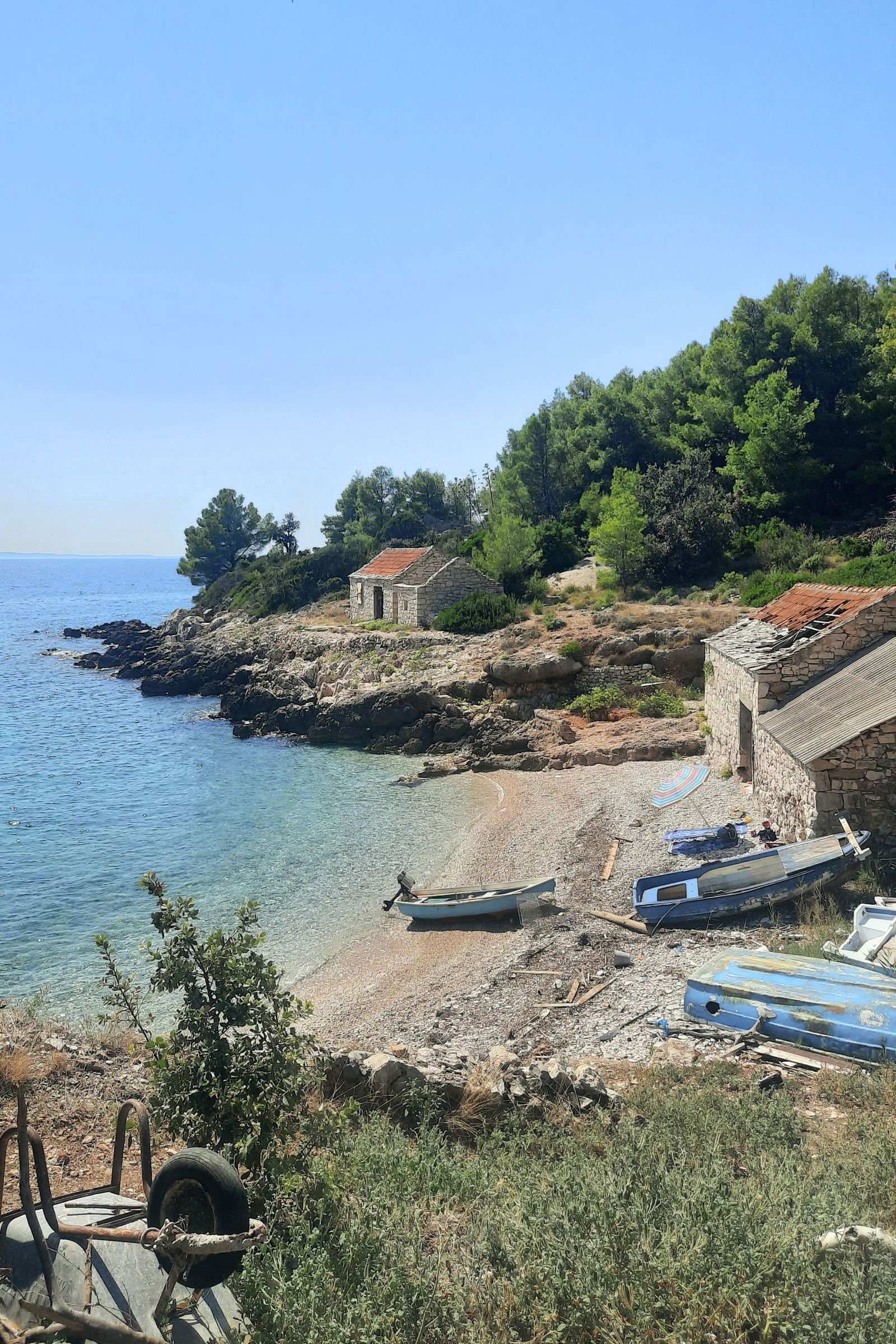
Abandoned Veli Črvanj
A car can also take you to the gorgeous beach of Medvidina. According to the remarkable kayakers at & Adventure, the cove takes its name from the Mediterranean monk seal, one of the most endangered animals on earth. Last spotted in the Adriatic in 1964, there is still evidence that these huge (300kg), elusive, and adorable creatures still visit nearby caves.
Also on the southern coast, there are several beaches that can only be reached by boat: Veli Bok, also known as Beach Zastražišće; Ljubinka, with only an old stone house; Duga Pazuha, where a beautifully terraced olive orchard slopes down to a perfect small bay; Kobil-Dolac, with its isolated summer cottage; the charming cove of Vratinja Paklina; and the large, unspoiled expanses of Križna Lučica and Strvanj to name a few.

Beach Zastražišće
On the northern coast, you have Vela Stiniva, Stanimir, Dubac, Kožica, and Pokrivenik. We’ve already touched on Vela Stiniva and Pokrivenik above in the section on arriving to Zastražišće by boat. These inlets have steep limestone cliffs that protect boats from dangerous winds, but also provide a stunning hideaway from beach lovers.
The northern coast of Hvar is underrated in general. It offers more shade on the hot days of high summer, lusher pine forest, and often features more dramatic topography than its southern counterpart, as well as views of the everchanging Mosor mountains.
Where to eat in Zastražišće
Lunch
How we love Preza. Set in Mali Pokrivenik, the smaller of the two Pokrivenik coves on the northern coast of Zastražišće, Preza is an ideal spot for indulging in post-beach nosh on their shaded wooden pergolas while staying just steps away from the water.
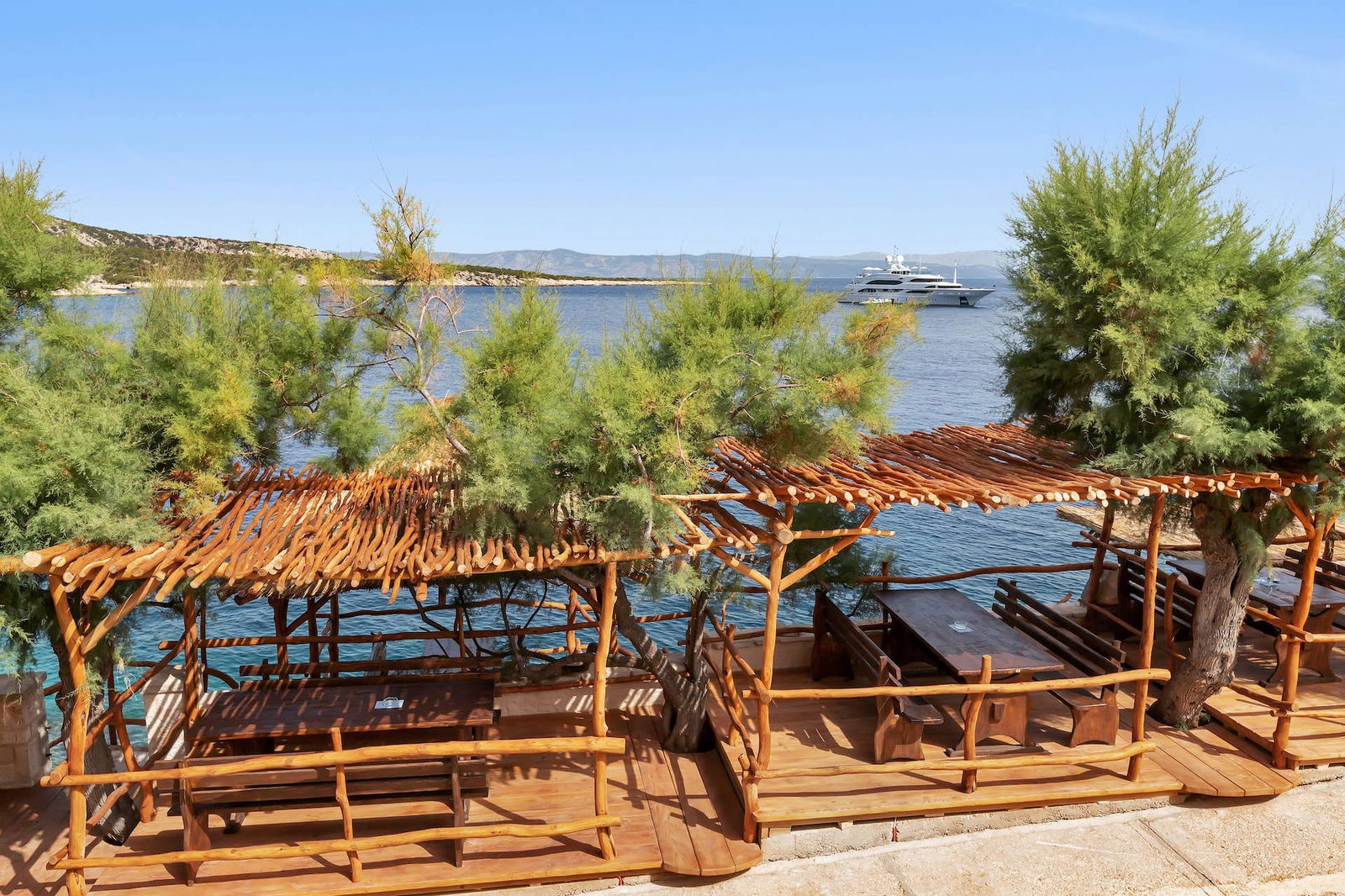
Dinner
While technically not in Zastražišče but in Veprinova Bay which is part of the neighbouring village of Gdinj, Veprinova Fish Restaurant is one of our all-time island favorites. A charming family-run restaurant serving simple yet delicious seafood, freshly caught in the clear waters below. (Not a fan of fish? They offer meat options too.) Every table has a breathtaking view of the entire bay, and the atmosphere is exceptionally warm and welcoming.
Fun fact: This was the first restaurant on the island that Hvar Away founders, Elisha & Matt, ever visited. Hvar became their permanent home six months later – proof of this place’s magnetic charm!
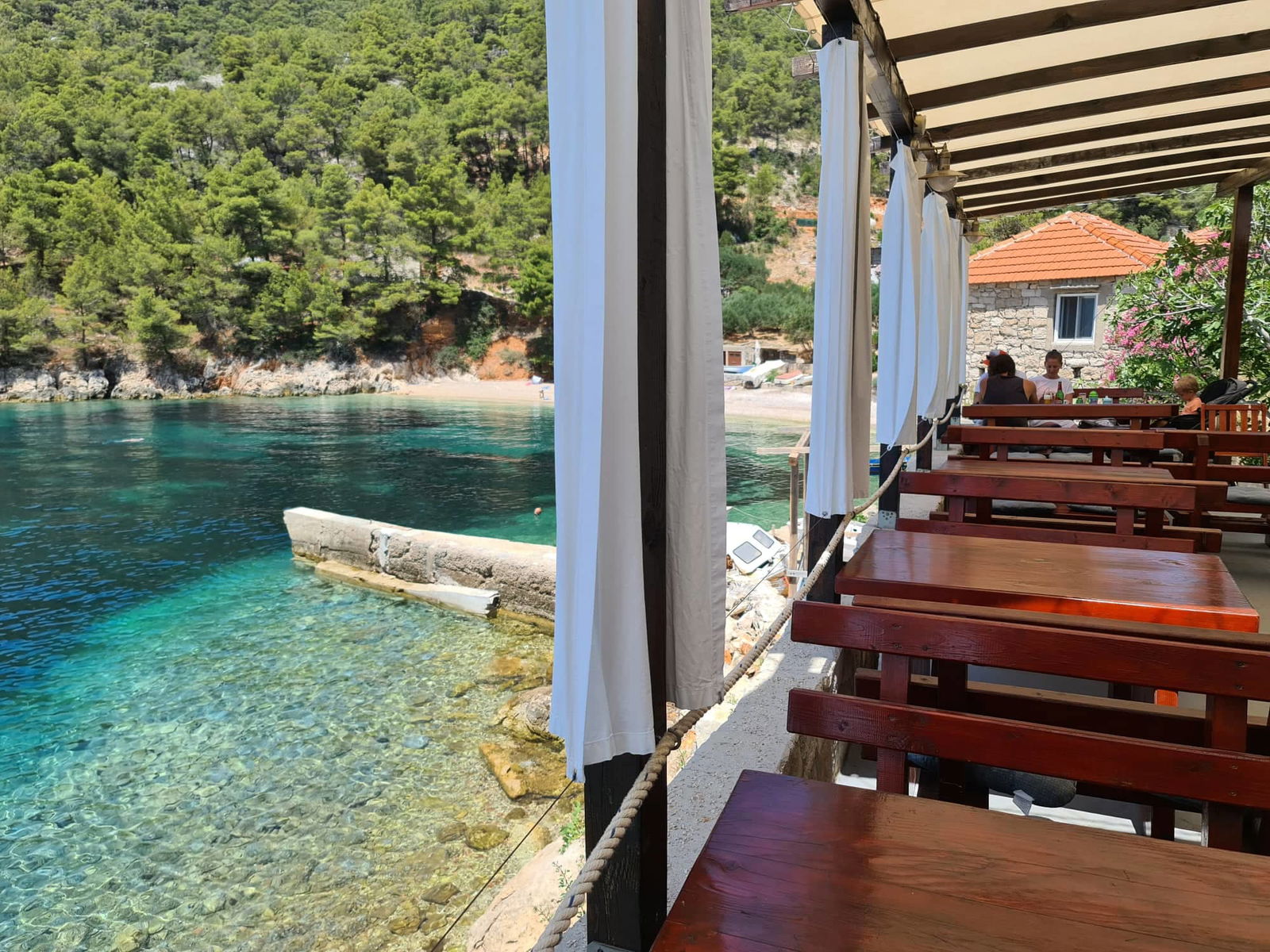
Basics and coffee
In both Zastražišće and Gdinj, there are small minimarkets with essential grocery items such as toilet paper and milk. They are open in the morning and evening only. There is also a cafe in Gdinj.
Jelsa, which is roughly thirty minutes away, has a full range of modern grocery stores, restaurants, bars, sweet shops, retail, and other amenities.
Where to stay in Zastražišće
The only official campsite in Zastražišće is Kamp Pokrivenik. There are no hotels, so the options range from rooms for rent to apartments to villas. Here are some things to consider when you’re evaluating where to stay in this area.
Given that Zastražišće’s strength is its pristine character and proximity to amazing coastline, we like properties that really shine in those respects. In other words, we like villas where wading in the sea for a quick swim before breakfast or capping off an incredible night with a midnight dip is as easy as jumping into the shower. Likewise, you don’t want to travel to such a remote location only to be bombarded by a neighbour’s music blasting or a crowded beach. Privacy is key.

La Villa Bleue in Zastražišće’s Medvidina Bay
Given that Zastražišće is not altogether easy to get to (part of its charm), consider looking for properties that are cosily self-sufficient, with common spaces that accommodate lively nights at home and kitchens that make cooking dinner a pleasure. Finally, it is worth investigating what kind of concierge services your host will provide. Can they deliver groceries to your rental, saving you a trip into town? Can they arrange tours and experiences starting from your home, such as boat rentals, massage, or a private chef? While a holiday far from civilization can be incredibly romantic, much depends on whether or not support staff will handle the practical considerations that can bog down trips to rural destinations.
At Hvar Away, we selected our portfolio property in Zastražišće, La Villa Bleue, both due to its excellence in the dimensions described above, and based on our knowledge that we can facilitate truly stress-free and unforgettable experiences at any location on the island of Hvar, through our logistics team and network of Experience partners.
La Villa Bleue is, without question, one of the most extraordinary villas on island Hvar. It is the seaside cottage that one dreams of when one imagines a retreat to the coast. Truly steps from the sea, it combines spacious, comfortable modernity with heritage charm. Not trivially, it was also designed with Hvar’s precious ecosystem in mind, being 100% solar powered.

A sprawling terrace, generous living and dining room, and light-filled living quarters make this home an inviting space to enjoy time with loved ones. A sea kayak, two SUP boards, an expansive outdoor grill and pizza oven, and a virtually private bay offer delightful invitations to get outside. Finally, the bay is accessible to all that Hvar and surrounding islands have to offer, with anchorage appropriate to small yachts, as well as a road to civilization.
Trending Journals

Local Guides
Malo Grablje
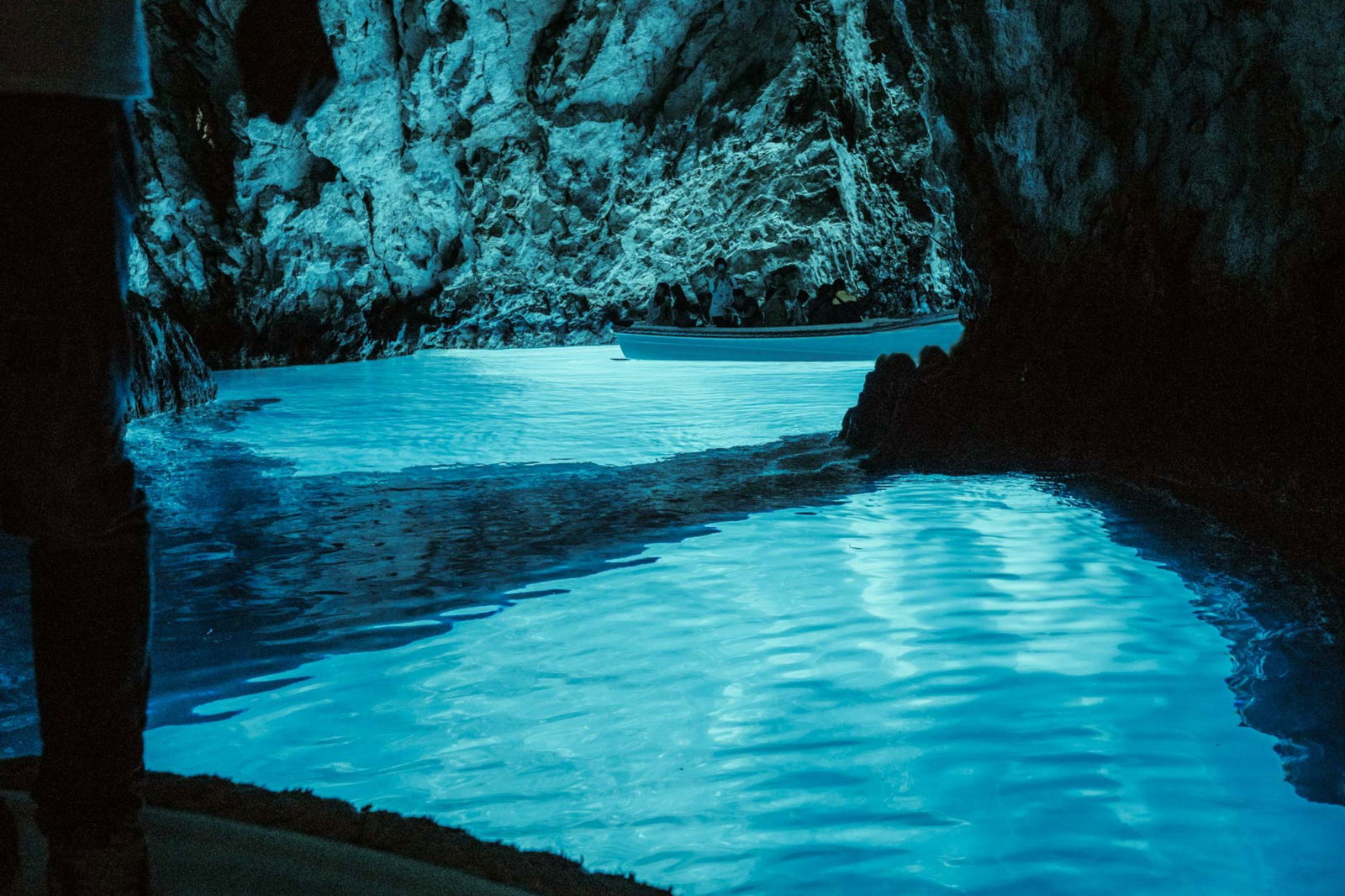
Inspiring itineraries
Croatia Blue Cave tour: Is it worth it?
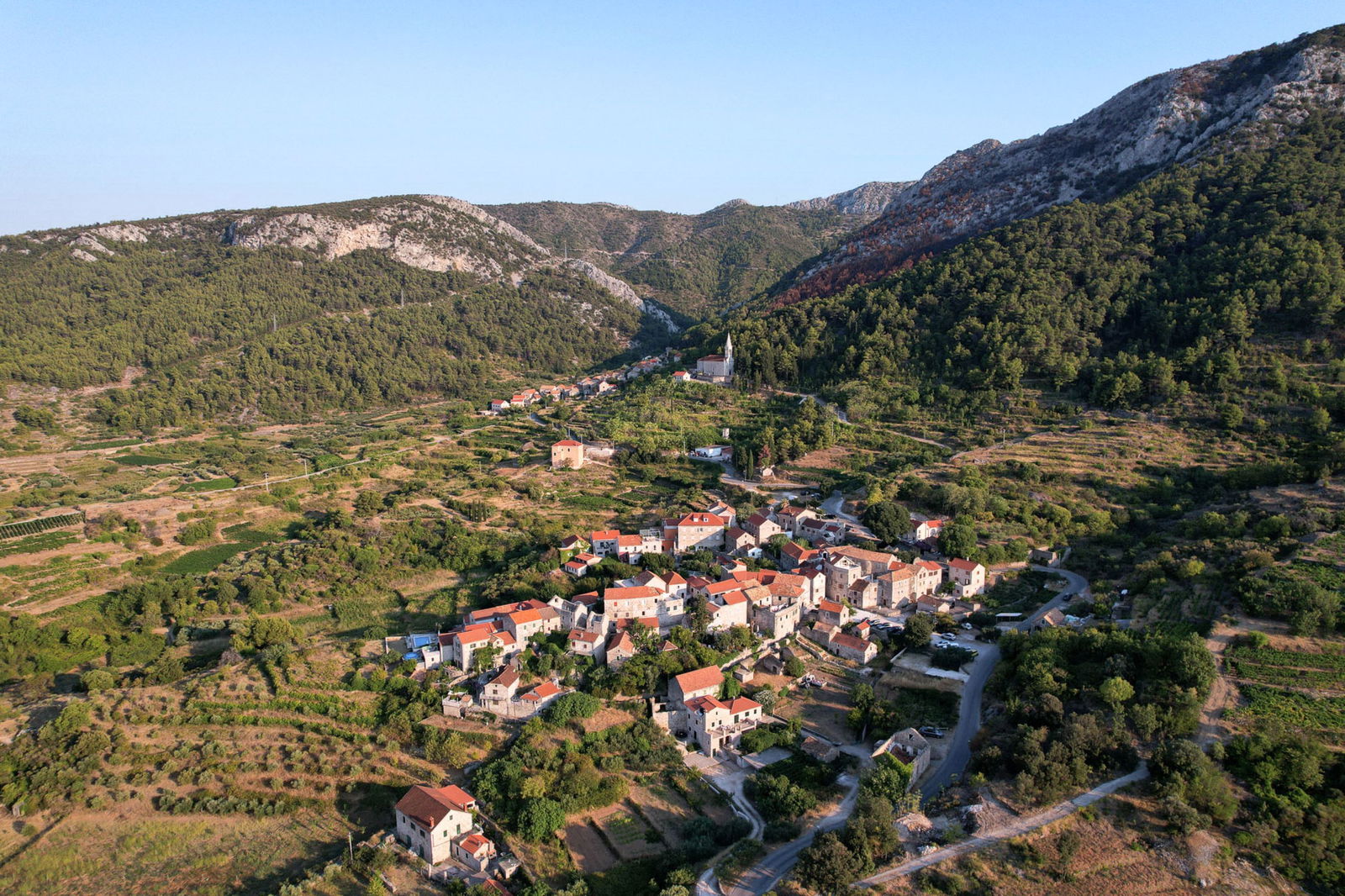
Local Guides
Pitve

We’re here to craft your dream Mediterranean villa escape.
Feeling inspired? Talk to our on-island team to make your travel dreams a reality.